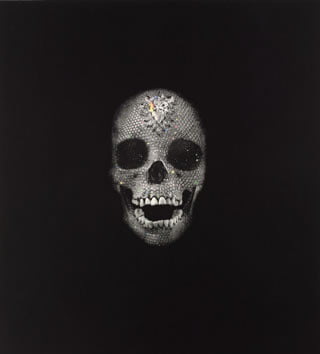The J. Paul Getty Museum announces The Aztec Pantheon and the Art of Empire, an exhibition showcasing masterworks of Aztec sculpture—among them recent archaeological discoveries—which will be juxtaposed with 16th- to 18th-century illustrations that reflect European interpretations of Aztec culture.
The Aztec Pantheon and the Art of Empire, on view at the Getty Villa from March 25 through July 5, 2010, represents the Getty Villa’s first display of antiquities from outside the ancient Mediterranean, and is scheduled to coincide with Los Angeles celebrations of the bicentennial of Mexico’s independence and the centennial of the Mexican revolution.

Unknown, Eagle, 100-300 A.D. Roman, Bronze. Object: H: 104.2 X W: 78.7 X D: 76.2 cm. 72.AB.151. The J. Paul Getty Museum, Villa Collection, Malibu, California
The exhibition traces European efforts to understand the New World by viewing it through the lens of its own classical past. Following Hernán Cortés’s conquest of the great city of Tenochtitlan in 1520, Europeans confronted a culture that was profoundly unfamiliar. When the Franciscan missionary Bernardino de Sahagún compiled a history of Aztec culture up to the conquest, known as the Florentine Codex, he created a parallel pantheon, identifying the principal Aztec deities with their Roman counterparts: Huitzilopochtli is named “otro Hercules” (another Hercules) while Tezcatlipoca was likened to Jupiter, and so on. In this way, Sahagún and his local informants drew upon Graeco-Roman paradigms to assist Europeans in understanding Aztec religious beliefs.
These early encounters with the civilizations of the Americas coincided with Renaissance Europe’s rediscovery of its own classical past. Europeans were fascinated with the Aztecs and other cultures of the New World. Artifacts from the Americas made their way back to European private collections, where they also inspired festivals and pageants, including performances of classical theater staged in New World settings. In the 18th century, scholars of comparative religion such as Bernard Picart compared Quetzalcoatl and Mercury, rejecting the demonization of what were previously seen as pagan deities.
“Although Graeco-Roman and Aztec cultures are distinct historical phenomena, and developed in isolation from one another, Europeans applied familiar frames of reference to a New World that was largely unfathomable,” explains J. Paul Getty Museum antiquities curator Claire Lyons. “Bringing these monumental cult statues, reliefs, and votive artifacts to Los Angeles and showing them in the Mediterranean setting of the Getty Villa offers an incredible chance to explore a little known episode: the dialogue between Aztec culture and classical antiquity that was sparked in the age of exploration, carried forward during the Enlightenment, and which continues to be informative in the present.”
The Aztec monuments on view in The Aztec Pantheon and the Art of Empire both captivate and frighten, with sun gods bristling with claws and fangs, and undulating rattlesnakes bursting forth from the neck of a decapitated earth goddess. Soon after being discovered, they were reburied as creations of the devil, and only later resurrected as masterpieces comparable to the greatest sculptural traditions. These remarkable artworks never fail to enthrall those who see them.
After five centuries they continue to be invoked as political symbols, eternal emblems of Mexican national heritage. But what did these monoliths mean as part of the sacred architecture and cults of the gods celebrated in Mexico’s ancient capital of Tenochtitlan? More answers are emerging after a century of archaeological research, together with the recognition that the fearsome power of an empire, embodied in the Aztec gods, was not so very different from that of other ancient civilizations of the Old World.
Drawing primarily on the collections of the Museo Nacional de Antropología and the Museo del Templo Mayor in Mexico City, the exhibition will also feature the Sahagún’s Florentine Codex from the Biblioteca Medicea Laurenziana in Florence, and 16th to 18th-century works relating to Mexico from the Getty Research Institute’s Special Collections. “European response to pre-Columbian and colonial-era Latin America has long been a focus of collecting for the Getty Research Institute,” says Lyons. “Its rich holdings on Mexico show how remarkable Aztec objects were ‘translated’ by Europeans.”
Adds J. Paul Getty Museum director Michael Brand: “I have been keen to broaden the perspective of the Getty Villa. Bringing some of Mexico’s greatest works of Aztec art to the Villa for the first time will enable visitors and scholars alike to reflect on both cultures in a richer way. We are very grateful to our Mexican and Italian colleagues for their generous loans that make this unique exhibition possible.”
The Aztec Pantheon and the Art of Empire is curated by Claire L. Lyons, curator of antiquities, J. Paul Getty Museum, and John M. D. Pohl, research associate, Cotsen Institute of Archaeology, UCLA. Accompanying the installation is an illustrated companion volume, The Aztec Pantheon and the Art of Empire, authored by John Pohl, which describes Aztec culture and cosmology, and the reciprocal consequences of European contact with New Spain.
In conjunction with the exhibition, a two-day conference will be convened at the Getty Villa from April 29-May 1, 2010. International scholars will address historical analogies drawn between the Aztecs and ancient Rome, the production of Sahagún’s Florentine Codex, and the implications of comparative approaches to the archaeology of empires.
In addition to the conference, a full schedule of public programs will be developed, including gallery tours, family programs, adult education courses, point-of-view talks, and curatorial lectures. A brochure and audio guide will be available to visitors, and a permanent exhibition website will extend access to international audiences.
In collaboration with the California Institute of the Arts, a theatrical performance based on Aztec texts in Nahuatl, the poem “Sun Stone” (1957) by Octavio Paz, and Antonin Artaud’s 1938 “The Theater of Cruelty (Second Manifesto)” is currently in development.
The Aztec Pantheon and the Art of Empire is part of Los Angeles’ celebration of the bicentennial of Mexico’s independence and the centennial of the Mexican revolution. Several other cultural institutions will also be developing exhibitions and programming as part of a city-wide effort.
www.getty.edu



